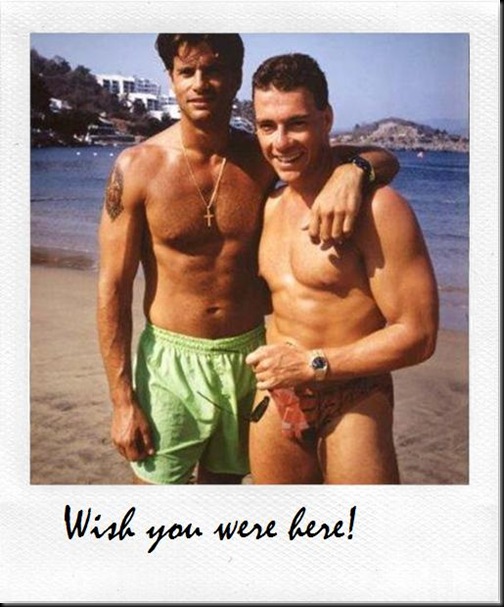

Netflix has really stepped up the amount of interesting content they have available on Watch Instantly. During this Halloween season, here are a few horror films you may enjoy(all entries are linked to Netflix):
Amityville II: The Possession(1982; Damiano Damiani)
The Astro Zombies(1969; Ted V. Mikels)
Audrey Rose(1977; Robert Wise)
The Beast Within(1982; Philippe Mora)
Beware Children At Play(1989; Mik Cribben)
Black Sabbath(1963; Mario Bava)
Blood Bath(1966; Jack Hill/Stephanie Rothman)
Body Snatchers(1993; Abel Ferrara)
The Burning(1981; Tony Maylam)
The Burrowers(2008; J.T. Petty)
Cat's Eye(1985; Lewis Teague)
Child's Play(1988; Tom Holland)
Christine(1983; John Carpenter)
The Church(1989; Michele Soavi)
City of the Living Dead(1980; Lucio Fulci)
Crawlspace(1986; David Schmoeller)
The Crazies(1973; George Romero)
Creature(1984; William Malone)
Creepshow(1982; George Romero)
Dolls(1987; Stuart Gordon)
Dracula A.D. 1972(1972; Alan Gibson)
Dr. Terror's House of Horrors(1965; Freddie Francis)
Edge of Sanity(1989; Gerard Kikoine)
Empire of the Ants(1977; Bert I. Gordon)
The Food of the Gods(1976; Bert I. Gordon)
From Beyond(1986; Stuart Gordon)
Girly(1970; Freddie Francis)
The Gore Gore Girls(1972; Herschell Gordon Lewis)
Graduation Day(1981; Herb Freed)
Grave of the Vampire(1974; John Hayes)
The Hills Have Eyes 2(1985; Wes Craven)
Horror of Dracula(1958; Terence Fisher)
The Horror Show(1989; James Isaac)
The House of the Devil(2009; Ti West)
The Incredible Melting Man(1977; William Sachs)
Isolation(2005; Billy O'Brien)
It! The Terror From Beyond Space(1958; Edward L. Cahn)
Jaws of Satan(1981; Bob Claver)
Lake Mungo(2008; Joel Anderson)
Land of the Minotaur(1976; Kostas Karagiannis)
Lisa(1990; Gary Sherman)
Let Sleeping Corpses Lie(1974; Jorge Grau)
Masque of the Red Death(1964; Roger Corman)
Mega Piranha(2010; Eric Forsberg)
Monsturd(2003; Rick Popko/Dan West)
Monster Dog(1985; Claudio Fragasso)
Mothers Day(1980; Charles Kaufman)
The New York Ripper(1982; Lucio Fulci)
New Year's Evil(1980; Emmett Alston)
Nightbeast(1982; Don Dohler)
Open House(1987; Jag Mundhra)
Opera(1987; Dario Argento)
Peeping Tom(1960; Michael Powell)
Planet of the Vampires(1965; Mario Bava)
Popcorn(1991; Mark Herrier)
The Prowler(1981; Joseph Zito)
Re-cycle (2006; Oxide Pang Chun/Danny Pang)
Return In Red(2005; Tyler Tharpe)
Rumpelstilskin(1995; Mark Jones)
Santa's Slay(2005; David Steinman)
Scarecrows(1988; William Wesley)
Seed(2007; Uwe Boll)
The Sentinel(1977; Michael Winner)
Shark Attack(1999; Bob Misiorowski)
Shock(1977; Mario Bava)
Shockwaves(1977; Ken Wiederhorn)
Silent Scream(1980; Denny Harris)
Spellbinder(1988; Janet Greek)
The Stendhal Syndrome(1995; Dario Argento)
Suspiria(1977; Dario Argento)
Stuck(2007; Stuart Gordon)
Superbeast(1972; George Schenck)
Survival of the Dead(2009; George Romero)
Tales From The Hood(1995; Rusty Cundieff)
Tales That Witness Madness(1973; Freddie Francis)
Tentacles(1977; Ovidio G. Assonitis)
Theater of Blood(1973;Douglas Hickox)
Thirst(1979; Rod Hardy)
The Toolbox Murders(1978; Dennis Donnelly)
Troll 2(1990; Claudio Fragasso)
Two Evil Eyes(1990; Dario Argento/George Romero)
The Video Dead(1987; Robert Scott)
And a few of my personal favorites:
Them!(1954; Gordon Douglas)
Don't Look Now(1973; Nicolas Roeg)




























 with a bowl cut. The gang reaches the island and come face to face with an island infested by a vampire horde. Their leader is like a mixture between the Goblin King and Edward Cullen on steroids; he’s paler, more effeminate, goofier hair, and has an even more abusive relationship with his honey.
with a bowl cut. The gang reaches the island and come face to face with an island infested by a vampire horde. Their leader is like a mixture between the Goblin King and Edward Cullen on steroids; he’s paler, more effeminate, goofier hair, and has an even more abusive relationship with his honey.














